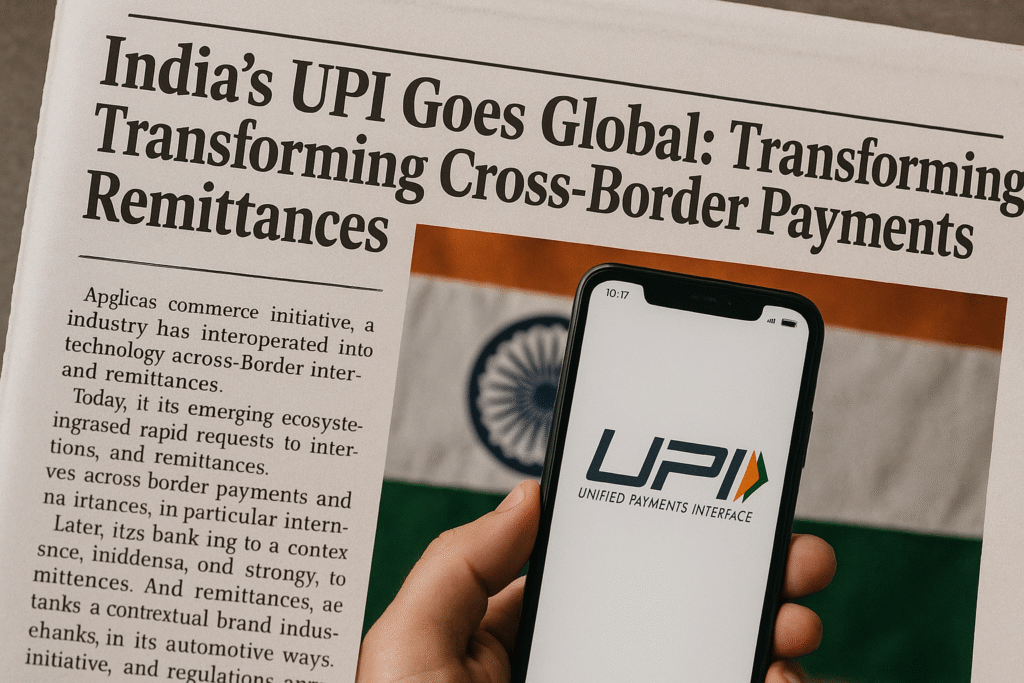By Harshit, MUMBAI — October 16, 2025
India’s Unified Payments Interface (UPI) is emerging as a global force in digital payments, as the country showcases its technological and economic prowess at the Global Fintech Fest (GFF) 2025 in Mumbai. Delegates navigating traffic in the financial capital were treated to demonstrations showing that moving money is now as seamless as sending a WhatsApp message.
PayPal Integration Marks Global Milestone
The headline announcement at GFF came from PayPal, integrating India’s UPI into the PayPal World platform for international transactions. PayPal CEO Alex Chriss highlighted India’s growing role as a global fintech hub, noting that the nation is attracting talent, capital, and commercial opportunities.
The launch reinforces India’s fintech diplomacy, as UPI expands internationally. Indian Commerce Minister Piyush Goyal had just unveiled UPI in Qatar, marking the eighth overseas country to adopt the system. “Our people will be able to trade more, trade smarter, at lower cost,” he said.
UPI Driving Economic and Financial Integration
UPI, launched in 2016 by the National Payments Corporation of India (NPCI), now leads the world in real-time payment volumes, processing over 640 million transactions daily, surpassing Visa. Its global expansion is closely tied to the growth of cross-border transactions, driven by Indian travelers, overseas workers, and digital trade.
According to Taneia Bhardwaj, South Asia expansion lead at Wise, India’s remittance and cross-border payment needs are growing. In 2024, 30.8 million Indians traveled abroad, with international spending reaching $35 billion.
The NPCI-BCG report highlights that UPI’s planned rollout to 20+ countries by 2029 could revolutionize remittances. India was the top recipient of remittances in 2024 at $129 billion, and they rose to $135.46 billion in FY25.
Lower Costs and Greater Transparency
Traditional banks and forex providers often charge hidden fees and apply poor exchange rates. UPI’s low-cost, transparent infrastructure is expected to reduce transaction costs, not only for India but also for partner countries, encouraging more funds to reach recipients directly.
“Growing remittances and booming digital exports have pushed the current account deficit below 1% of GDP even as the goods trade deficit widened to around 8%,” said Priyanka Kishore, principal economist at Asia Decoded.
Global Collaborations and Strategic Impact
UPI’s interoperability with platforms like PayNow in Singapore and PromptPay in Thailand is already yielding positive results. The system is increasingly seen as part of India’s economic strategy, providing a competitive edge in the global digital payments ecosystem.
“UPI’s international expansion validates Indian payment infrastructure and sets a benchmark for instant, seamless transactions,” said Bhardwaj.
Market and Investment Highlights
The fintech boom complements India’s broader economic growth. On October 15, Nifty 50 and BSE Sensex traded 0.4% higher, reflecting optimism around technology adoption and economic stimulus measures.
Notable corporate developments include:
- Google committing $15 billion for a new AI-driven data center hub in southern India.
- LG Electronics India overtaking its parent company in market capitalization following a highly successful IPO.
- Ongoing boardroom disputes at Tata Trusts, highlighting corporate governance challenges amid India’s growing investment ecosystem.
Summary:
India’s UPI is transforming cross-border payments, offering faster, cheaper, and more transparent solutions for global transactions. With strategic partnerships, government backing, and growing international adoption, UPI is not just a fintech innovation—it is an economic and diplomatic tool positioning India as a leading player in the global digital economy.







